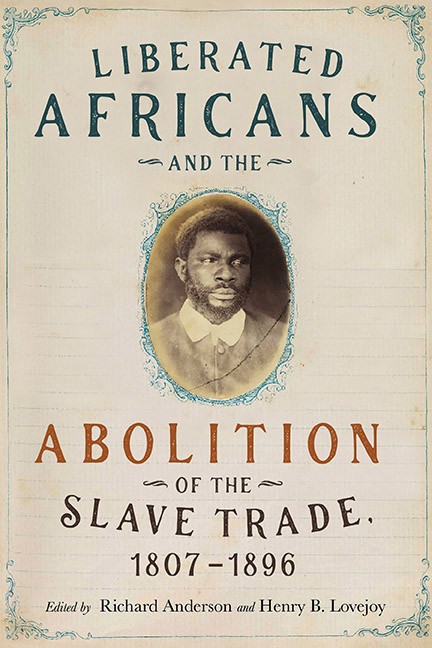Book contents
- Frontmatter
- Dedication
- Contents
- List of Illustrations
- Acknowledgments
- Introduction: “Liberated Africans” and Early International Courts of Humanitarian Effort
- Part One Origins of Liberated Africans
- Part Two Sierra Leone
- Part Three Caribbean
- Part Four Lusophone Atlantic
- Part Five Liberated Africans in Global Perspective
- Part Six Resettlements
- Bibliography
- Notes on Contributors
- Index
12 - The Paquete de Benguela: Illegal Slave Trade and the Liberated Africans in Rio de Janeiro
Published online by Cambridge University Press: 21 March 2020
- Frontmatter
- Dedication
- Contents
- List of Illustrations
- Acknowledgments
- Introduction: “Liberated Africans” and Early International Courts of Humanitarian Effort
- Part One Origins of Liberated Africans
- Part Two Sierra Leone
- Part Three Caribbean
- Part Four Lusophone Atlantic
- Part Five Liberated Africans in Global Perspective
- Part Six Resettlements
- Bibliography
- Notes on Contributors
- Index
Summary
In 1840, the British navy intercepted the Paquete de Benguela, commanded by Captain Francisco Pereira Nunes, off the coast of Rio de Janeiro. The patache carried on board 280 enslaved Africans despite the law of 1831 prohibiting the slave trade into Brazil. The Paquete de Benguela was equipped with iron-barred hatchways, temporary divisions made of leather where people could lie down, water casks, baskets to serve cassava fl our, and a large cooking cauldron. After searching inside the ship, the British found that there was neither enough food nor water to travel to Montevideo, but those provisions were nearly sufficient to get to the outskirts of Rio de Janeiro. The vessel belonged to Manoel Joaquim Teixeira and José Joaquim Teixeira, subjects of the Portuguese crown, under whose flag the Paquete de Benguela sailed when seized.
According to the documents drawn up in the city of Benguela, including the vessel's title deed and the passports of the crew members, the captain, and the passengers, all of the crew were Portuguese. The official documentation and the logbook of the vessel both stated that the vessel's route was from Benguela to Montevideo. As Portuguese subjects sailing to the newly independent Republic of Uruguay, the crew could not be further importuned. However, even though the documentation specified the origin of Paquete de Benguela, the British crew deemed the broader context of the illegal slave trade between the African continent and the Brazilian coast sufficient grounds for escorting, investigating, and seizing the ship. Thomas Frederic Birch, commander of the British war brig Wizard, seized the Paquete de Benguela on 2 September 1840, sending the ship, the people, and the documents to be judged by the Anglo-Brazilian Mixed Commission Court in Rio de Janeiro.
During the journey, the entire crew, including the captain and the boatswain, fled the vessel. A representative of the Brazilian authorities, Mr. Antonio Paulino, noticed the “loss” of the prisoners on 5 September 1840. Accordingly, the vessel had been taken by the officer of the English navy to the surroundings of the port of Rio de Janeiro in the previous afternoon. However, “instead of going to the designated place, the ship was taken to the beach of Dom Manoel, where the prisoners escaped by the ramp of the anchorage of that place.”
- Type
- Chapter
- Information
- Publisher: Boydell & BrewerPrint publication year: 2020



